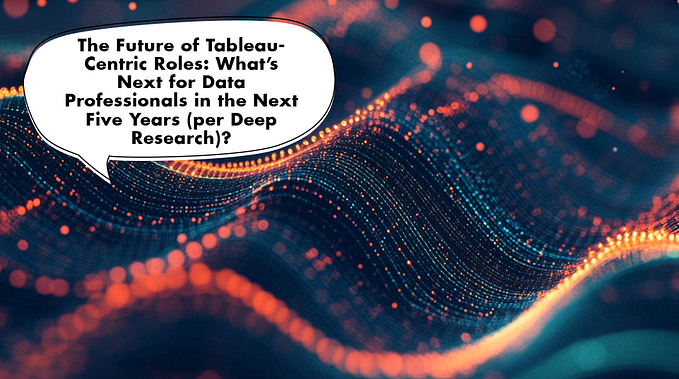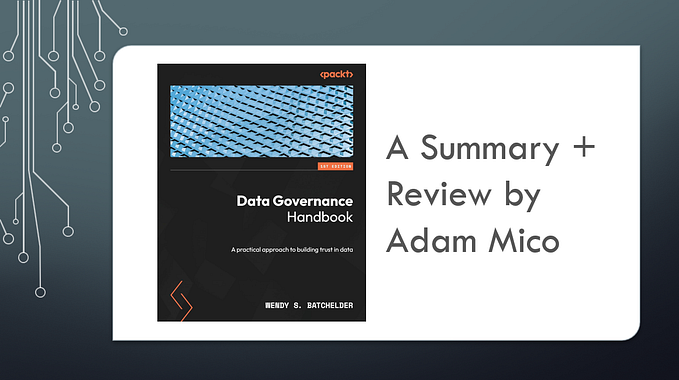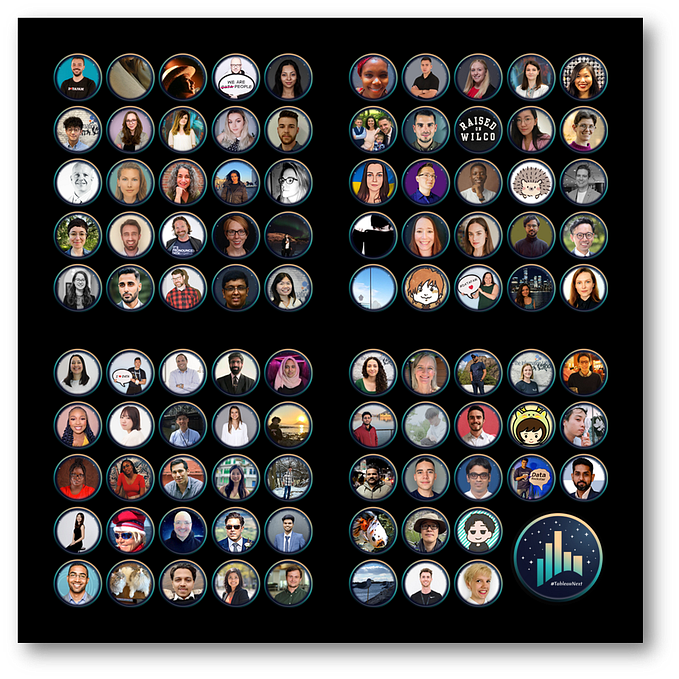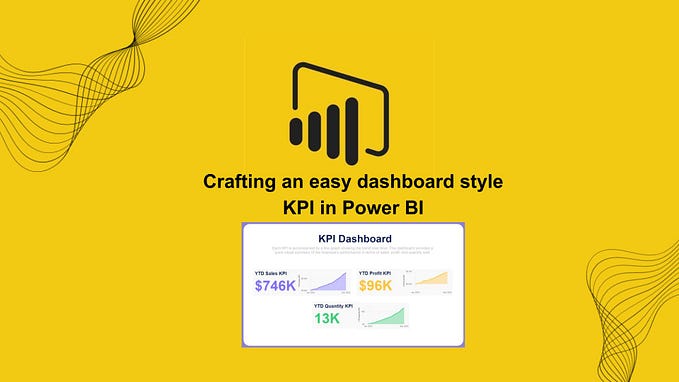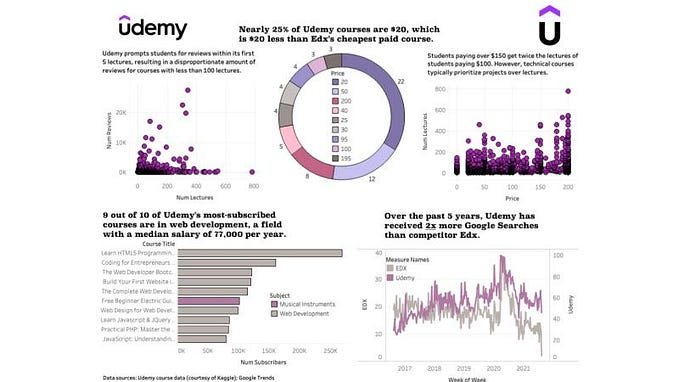A weekly blog about the ‘data viz’-making process, #datafam / data analytics member interviews, & entertainment for introverts (consisting of a music morsel & a binge bite).

Feature Interview
Mico’s Introduction: In February, when the #DuBoisChallenge initiative was launched, I grew incredibly impacted by W.E.B. Du Bois’ work, his story, and his vision. While working on recreating his visualizations for the weekly challenge, it helped me consider the intense effort that went into the research by he (& his students), the likely resistance to attaining such data, and his mindset when sharing this information visually. What really compeled me was his thoughtful and layered approach to providing a story that’s as impactful as it is striking. This challenge is great for anyone who really wants to creatively test their data viz skills and to understand a timeless (+eclectic) approach to infographic design.
Thank you Anthony Starks (Twitter | SpeakerDeck), Allen Hillery (Twitter | Blog), and Sekou Tyler (Twitter | Site) for driving this initiative and helping many of us grow and appreciate historical data visualization.
Adam Mico (AM): Sekou, Allen, and Anthony. Please share when you 1st learned of W.E.B. Du Bois’ data visualization work, and what was its immediate impact on you?
Anthony Starks (AS): In May 2017, at the Data Visualization New York meetup, hosted by Naomi Robbins, Howard Wainer presented “Historical development of W.E.B. Du Bois’ graphical narrative”. I was immediately struck by…
- Their existence
- The artistry of the work
Looking at the spiral work, for example, I thought “How can I reproduce this?”.
Sekou Tyler (ST): I learned about W.E.B. Du Bois’ work in 2018. W.E.B. Du Bois attended Fisk University in Nashville and I attended an event that was held on their campus. One of the speakers in attendance highlighted several of his data visualizations and I remember being in awe because of how great the visualizations looked. He was definitely ahead of his time.
Allen Hillery (AH): I learned about Du Bois’ work about two years ago when I was looking to do a data-related blog post for Black History Month. Someone recommended I look at Du Bois’ work and I was intrigued. I knew Du Bois for Souls of Black Folk but nothing about his contributions to data visualization! I immediately connected with Du Bois and felt a sense of pride that someone who looked like me was a pioneer in the field.
AM: How did the #DuBoisChallenge initiate and what were your roles in the pre-launch process?
AS: I had no role in the pre-launch process — Allen and Sekou came to me with the idea. I piled on — curating the list and data for the challenge, providing visuals and Twitter threads to guide people, using my existing work.
ST: Allen and I are on Tableau’s Community Equity Task Force and we were having a conversation that led to W.E.B. Du Bois. I originally was going to try and recreate them myself as a solo project, but Allen suggested that we turn it into a challenge that the data visualization community can be involved in. I was originally going to try and figure out how to scrape the data sources but Allen set up a meeting with Anthony and the rest is history!
AH: I’ve been wanting to work with Sekou for awhile since I heard him speak at one of Tableau’s Data and Diversity events. We’re both on Tableau’s Community Equity Task Force. We were talking one weekend and he wanted to collaborate on recreating Du Bois’ data visualization. I came back to him and was like, “Why don’t we make it a challenge like #MakeOverMonday or #WorkOutWednesday?” He loved the idea and we just went for it. So we approached Anthony about teaming up with us as he had already recreated all of Du Bois’ visualizations!
AM: Anthony, you recently shared in an incredible presentation that you created your own data visualization tool to recreate the work of W.E.B. Du Bois. The ‘why did you’ came up as a question around the one hour and 9-minute point), but of interest to me is ‘what did you learn’ while creating your own tool?
AS: The tools (decksh, dchart) were already written when I started in July 2019, but the Du Bois work led me to add features to make it easier, but in general, I was happy that my tools were up to the task.
I also learned the value of combining analog tools, (rulers, protractors, eyes), with digital tools, this also gave me a real sense of the original processes used to make visuals. Other lessons include using scale (large posters), considering the venue,(using eye-catching colors), and being true to your intention, being true to the story you want to tell.
The final lesson, don’t be afraid to try something new — don’t be constrained by the defaults or convention — be bold, invent.
Another thing was the value of using GitHub to organize and manage the code. This allows for easy sharing but contributes to having consistent, repeatable processes. (for example, the presentation is a decksh presentation that uses the artifacts of the re-creations directly embedded).
AM: I’ve never worked on recreating historical vizzes before. Not only has the challenges of data collection and research itself struck me because of the time period (around 1900), but because of the nature of the research he and his students were collecting; it must have been met with significant hurdles too. Allen and Sekou, how has the work of his data visualizations impacted you, and what are the inescapable thoughts you have when recreating or researching the work?
ST: I’ve learned a lot about W.E.B. Du Bois and how he let the data speak for itself. Each plate had a unique story to tell and his approach was amazing. He really knew how to draw an audience in with unique visualizations, but he knew that the data was the main focal point. He never left anything to chance and has a data-driven metric for his audience to look at. He was really ahead of his time with data visualizations and was a great storyteller.
AH: I applaud Du Bois’ style and poise when presenting his work. In addition to data visualizations, he used maps, photographs, and law codes to tell a story that Black America had progressed after Emancipation. This is a big deal as many of his peers subscribed to social Darwinism which claims that Black people would have died out over time due to being inferior to those of European descent. Also, remember that there was a system of laws in place that made things like educational attainment, homeownership, and wealth generation exponentially harder to virtually impossible for Black Americans at that time.
So Du Bois let the data speak for itself in how far Black America had come despite the roadblocks. As a data storyteller, his work is a perfect case study in telling an effective story.
AM: Have you worked on a social media initiative of this scope before? What have you learned about organizing such an initiative and what are your takeaways on the community’s response to it?
AS: I used Twitter throughout the process of making the re-creations. Part of my process was to post every time I completed a plate (check out my Twitter timeline from July to October 2019). The response to #DuboisChallenge has been overwhelming — it’s very humbling to see the response from other communities.
ST: I’ve participated in other initiatives, but this is the first one that I’ve been a leader of. I’ve learned to take it a week at a time and to have an open mind. You can’t base success on the number of retweets or likes because several people are watching that might not be commenting. The response to this challenge has easily surpassed my internal expectations. I also think the timing of our launch helped because it was during Black History Month and we helped bring light to what W.E.B. Du Bois was doing. I think it is great that we have engaged different communities and that we are having a wider reach than I expected. It has been really fun to be a part of and I believe we are just scratching the surface of what this challenge can do in years to come.
AH: This is the first social media initiative of this size that I’ve co-managed. While I have been growing a Twitter presence, the #DuBoisChallenge has allowed me to engage more communities and spread the history of Du Bois’ visualizations. I see it like a #MakeOverMonday or #WorkOutWednesday but a deeper dive into history. It’s also a celebration and recognition of the first American data visualization pioneer. I learned that it’s great to have a team to lean on when organizing. Sekou, Anthony, and I have all used our strengths to make this an awesome experience. Some of the main takeaways have been that everyone contributed and learned from the challenge in different ways. Everyone is impressed with the visualizations and the intricacy behind them. Others appreciate the message and the history behind them. We engaged new communities like the #TidyTuesday crew, academic and sociology circles.
I would like to shout-out Thomas Mock (Twitter), Luke Stanke (Twitter), Dan Hirschman (Twitter), Ben Jones (Twitter), Charlie Eaton (Twitter), Alberto Cairo (Twitter) and so many others who have sponsored the challenge and/or used their platforms to promote it.
AM: W.E.B. ‘s somewhat previously overlooked story is fascinating and he contributed so much… not limited to innovations in data visualization research and design, but in so many other ways. Of his achievements beyond data viz and research, what was your favorite contribution he was involved with and why?
AS: Via a webinar from the Du Bois Center at UMass Amherst, I recently learned about “The Brownies’ Book” — a magazine aimed at children (“A Monthly Magazine for Children of the Sun”) published only for a short time (January 1920-December 1921). This is a wonderful collection of stories, poems, games, photos, and illustrations which in its inaugural issues stated its aim: “Designed for ALL Children, especially ours” It aims to be a thing of Joy and Beauty, dealing in Happiness, Laughter, and Emulation, and designed for Kiddies from Six to Sixteen. It will seek to teach Universal Love and Brotherhood for all little folk…”.
How can I not admire something that “aims to be a thing of Joy and Beauty”?
Please see…
ST: W.E.B. Du Bois was one of the founders of the NAACP (National Association for the Advancement of Colored People), which was founded in 1909. The vision of the NAACP is to ensure a society in which all individuals have equal rights without discrimination based on race. The NAACP is still an active organization and its goals are as relevant in 2021 as they were in 1909.
W.E.B. Du Bois was a man of vision and worked really hard for the advancement of people that looked like him. His work ethic drives me to go as hard as possible, and it lets me know that I have another level that I can reach.
AH: I agree with Anthony about the “The Brownies’ Book”. It reminds me of graphic novels I’ve been reading by Jerry Craft, “The New Kid” and “Class Act”. It’s a light-hearted but impactful way that teaches young adults about diversity.
AM: Are there additional special plans coming up for the #DuboisChallenge and what do we have to look forward to in the weeks and months ahead?
AS: We’ve been asked to speak in June at the Baldwin School in Philadelphia, as part of an interdisciplinary course will develop their own advocacy projects using data. I’ve reached out to other people I know in education. Also, working with some academic colleagues at Princeton and UC Merced, we’ve launched a website on the Duboisian style: it offers resources and links, and we plan other features in the future, visit it.
ST: STAY TUNED!!!! We are really just scratching the surface with this initiative and I KNOW something bigger is brewing. Follow our social media handles for updates because we are far from done. When you have people who are doing things for the right reason then something big is destined to happen. I’m lucky to be partnering with a great group of individuals on this project.
AH: We’re definitely looking forward to speaking at the Baldwin School! I would love to see the #DuBoisChallenge evolve into a data literacy program. So I’m putting that out into the atmosphere! There’s definitely some interest.
AM: Please share a guilty pleasure or fun fact that many people in our community may not know about you?
AS: Check my activity on letterboxed. I also enjoy classical music. Recently I’ve been into the works of Florence Price, specifically her Piano Sonata, and “Sketches in Sepia”.
ST: I really care about the community and bringing the next person up. I believe that everyone can be great in whatever they decide to be great in and I genuinely enjoy connecting with people. My dream job is to be a professional networker or conference attendee :-). I just enjoy networking and meeting people who are passionate about things they care about. I’m a huge Lakers and Kobe Bryant fan, so I have a lot of #MambaMentality in me, and I believe that most people have another level that they can reach. The #DuBoisChallenge has made me level up, so I’m excited about the impact it will have on others.
AH: I’m a foodie who would love to get paid to travel the world to experience different cultures and try great food. I would also love to create a data visualization/cookbook in the future.
Additional links for further exploration
Anthony Starks:
- Recreating W.E.B. Du Bois Visualizations (YouTube video on Tableau’s channel)
- Presentation (Speaker Deck)
- W.E.B. Du Bois Recreation Catalog (Speaker Deck)
- Data Portraits Repository (GitHub)
- Modern Du Bois Viz (GitHub)
- Twitter Challenge (GitHub ‘readme’)
- W.E.B. Du Bois Style Guide (GitHub)
- Recreating W.E.B. Du Bois Data Portraits (Nightingale Article)
- Du Bois Book (Amazon link)
- [Dignity and Debt](site/project)
- Library of Congress Collection of African American Photographs for the 1900 Paris Exposition (government site)
Allen Hillery:
- Bringing communities together with the #DuBoisChallenge (article)
- W.E.B. DuBois: A story of resilience (article)
- The New Kid by Jerry Craft (book recommendation)
Mico’s Odds and Ends
- Priya and I released a form for community participation in our music viz collab. We want you to be part of it. No personal information will be shared unless you agree to share it for our viz.
- On 3/20, I will be hosting a #Datafam Community Hangout at Remo. These are a lot of fun and this time we don’t have a 50-seat limit. If you want your invite, please fill out this form.

- Congratulations to Allison Wright (Twitter) for her incredible guest post for last week’s blog. She earned a community roundup highlight from Tableau!
Binge Bite
The ‘incident’ at the Cecil was alarming when it made the news cycle in 2013 and the documentary provides so many layers of questions, answers, and possible answers. It definitely is a must-watch (although only part of the way through).
Music Morsel
There aren’t too many things more fun than to find a great forgotten track. Primal Danse’s 1982 new wave/post-punk gem is one track that can play ably along with The Cure & The Assembly. Give it a listen and let me know what you think.

